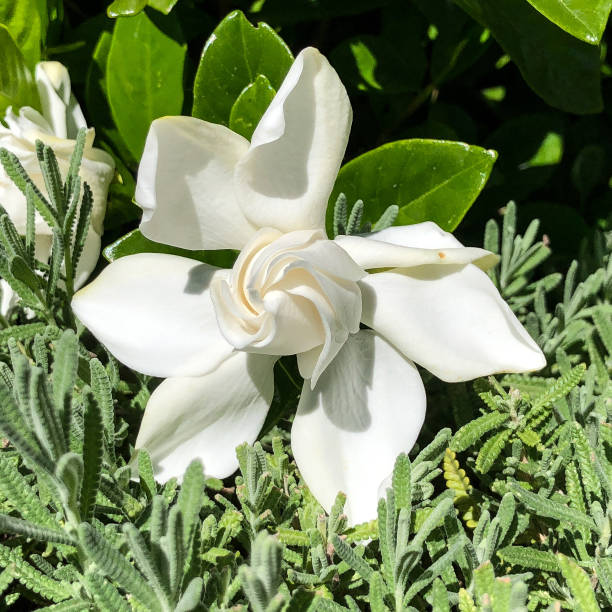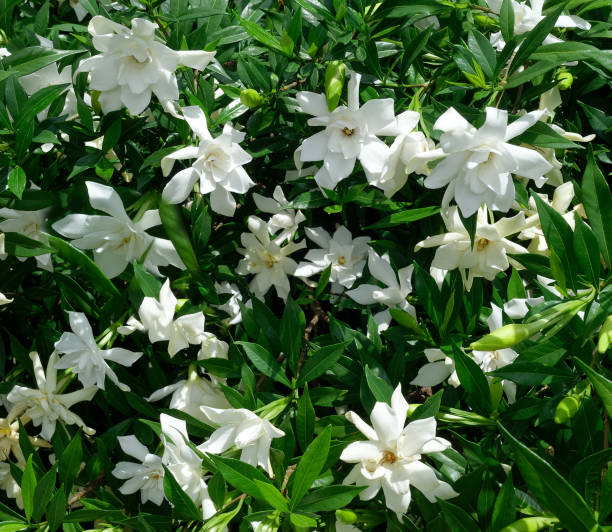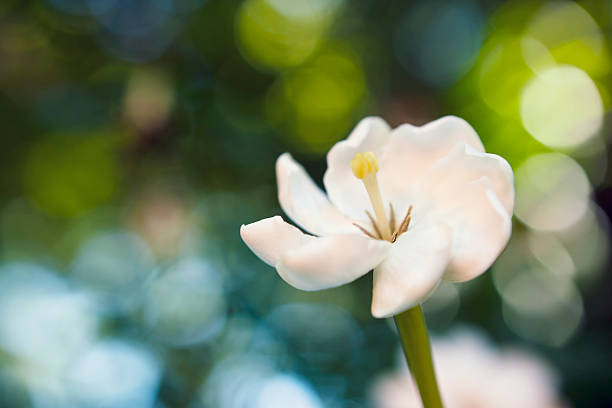Do Gardenias Like Sun or Shade? Know About Light Requirements for Your Gardenia
Do gardenias like sunshine or do they prefer a shady spot? Gardenias can be found in nearly every climate. But the most critical thing to know about gardenias is their sunlight requirements. If you are growing gardenias, you need to know about their sun requirements for best growth and health. However, it’s important to know what Gardenia varieties you are planting and where you plant, if it’s outdoor or indoor. Also, you need to consider your geographical location, especially the heat zone since each zone receives a different amount of sunlight.

Table of Contents
Gardenia Outdoor Light Requirement
It’s best to grow gardenias in the shade, preferably out of direct afternoon sunlight. Early morning and late afternoon shade are ideal conditions for gardenias, which flourish in hot climates. If their roots are protected with organic mulch in a milder environment, they may be able to make use of all available light. Potted gardenias should be put in the filtered shade or bright sunlight to avoid scorching. Gardenias have long, slender stems and sparse leaves if they are kept in an area with too much shadow. Fewer flower buds are produced and those that develop may break off before they can fully bloom. Flowers that are exposed to too much sunlight turn brown more quickly than those that are shaded. In USDA Zones, Gardenia thrives in 7-12 Heat Zones.
Gardenia Indoor Light Requirement
If you want to successfully cultivate gardenias inside, you must make sure that the plant is exposed to enough of the filtered sun for at least 6 to 8 hours every day, seven days a week. A position with plenty of natural light, such as a southeast-facing window, is ideal. This will ensure that the plant receives enough early sunlight as well as light throughout the rest of the day. It is not recommended to place the plant directly on the window sill of windows facing southwest since they may be too hot. Even if the soil is moist, heat and intense sunlight can burn the plant, causing the leaves to droop and the plant to die. Relocate your gardenia from one location to another as the seasons change to ensure that it receives sufficient light.
When placing your plant under a window during the summer months, use caution since it is susceptible to sunburn as a result of the blistering heat. As a result of this, the foliage becomes brown. In more extreme conditions, the plant may succumb to wilting. Placing the plant a few inches away from the window, or putting a curtain or blind in front of the window, shields it while still allowing it to get ample amounts of bright light from the outside. When it comes to the fall and winter months, a southwest window may be the best choice because there are fewer daylight hours. You shouldn’t be too concerned if the plant isn’t getting as much sun as it did throughout the spring and summer. They can still survive if they get at least 4 hours of sleep every night. If natural light is insufficient, consider putting the plants under a grow lamp to provide them with more light. This is a wonderful strategy for giving plants plenty of sunlight. They will not blossom if there is insufficient light.

Can Gardenia Handle in Full Sun?
Yes, Gardenia can handle in full sun. Gardenia is a tropical shrub that does well in warm climates. It should be planted in a location that receives at least six hours of sunlight per day. However, it is important to note that Gardenia is a tropical plant and may require some extra care during the summer months when the sun is strongest and can burn the leaves. To help protect Gardenia from direct sunlight, you can place it in a location with indirect sunlight or use a light shade. You can also water it regularly to keep it hydrated and flourishing.
Can Gardenia Grow in Full Shade?
Gardenias will grow in partial shade especially in the afternoon but may not do well in full shade. If they are grown in full shade, they may not produce as many flowers or fruit as those that are grown in less shaded areas.
Gardenia Varieties According to Light Requirements
| Gardenia Varities Shrub | Sun Exposure |
| Common Gardenia | Full Sun or Partial Sun |
| Cape Jasmine ‘Fortuniana’ | Full Sun to Partial Shade |
| August Beauty Gardenia | Full Sun to Partial Shade |
| Cape Jasmine ‘Chuck Hayes’ | Full Sun or Partial Sun |
| Cape Jasmine ‘Coconut Magic’ | Full Sun to Partial Shade |
| Cape Jasmine ‘Daisy’ | Full Sun or Partial Sun |
| Cape Jasmine ‘Frostproof’ | Full Sun or Partial Sun |
| Cape Jasmine ‘Heaven Scent’ | Full Sun to Partial Shade |
| Cape Jasmine ‘Jubilation’ | Full Sun to Partial Shade |
| Cape Jasmine ‘Pinwheel’ | Full Sun or Partial Sun |
| Cape Jasmine ‘Veitchii’ | Full Sun or Partial Sun |
| Cape Jasmine ‘Celestial Star’ | Full Sun to Partial Shade |
| Tahitian Gardenia | Full Sun to Partial Shade |
Groundcover/ Creeping Varieties
| Gardenia ‘Radicans’ | Full to Partial Sun |
| Golden Magic Gardenia | Partial Sun or Dappled Shade |
| Cape Jasmine ‘Buttons’ | Partial Sun or Dappled Shade |
| Cape Jasmine ‘Crown Jewel’ | Partial Sun or Dappled Shade |
| Cape Jasmine ‘Four Seasons’ | Partial Sun or Dappled Shade |
| Cape Jasmine ‘Kleim’s Hardy’ | Partial Sun or Dappled Shade |
| ‘Lee Two’ or ‘ScentAmazing’ | Partial Sun or Dappled Shade |

Why Sunlight is Important?
Light is the vital factor for your Gardenia to bloom. Without it, there’s no chance for your gardenia to display its beautiful and fragrant flowers. Most importantly, it is essential for plant growth, too. Apart from providing plants with sufficient energy content to thrive and achieve optimum flowering conditions, sunlight also plays a crucial role in the functioning of chlorophyll, a chemical that turns raw carbon-water nutrients into organic compounds that can be used by your plants, as well as carrying out all functions related to photosynthesis. Sunshine gives the plant an energy source that it needs to inhabit, reproduce and multiply successfully. A well-developed leaf canopy often contains enough photosynthetic tissues to provide the plant with everything it needs to thrive.
Therefore, it’s very important to make sure your Gardenia will have plenty of light. Not only this but also they prevent stress on plants caused by light deficiency (or too-high levels of heat).
What To Do During Winter When There’s Not Enough Sunlight
If you live in a region where you can experience the winter season, it’s best to know how to take care of Gardenia. The leaves become brown in the winter when temperatures dip below 15°F (-9.4°C), and if the temperature drops below 15°F (-9.4°C) for an extended period of time, you may end up with black leaves. That’s hardly the kind of lush vegetation you’d expect to see in this location.
When temperatures drop, you can protect gardenias in the winter by covering them with a blanket or cardboard box on the fringes of the recommended climate zones. A cardboard box large enough to cover the shrub without bending the branches is a must.
The days are shorter and the light less intense throughout the winter. There are two techniques to raise the brightness levels to the required levels when the sunshine isn’t as bright.
For beginners, put your potted plant near a south-facing window, which is the easiest solution. To get maximum morning light while minimizing afternoon heat, indoor Gardenias in any other season would be positioned near an east-facing window.
In the winter, when temperatures are lower, they don’t need to protect themselves from the glare of the midday sun.
The option is to use full-spectrum grow lights for four to six hours a day. These are used to create an inside version of the outdoors.
